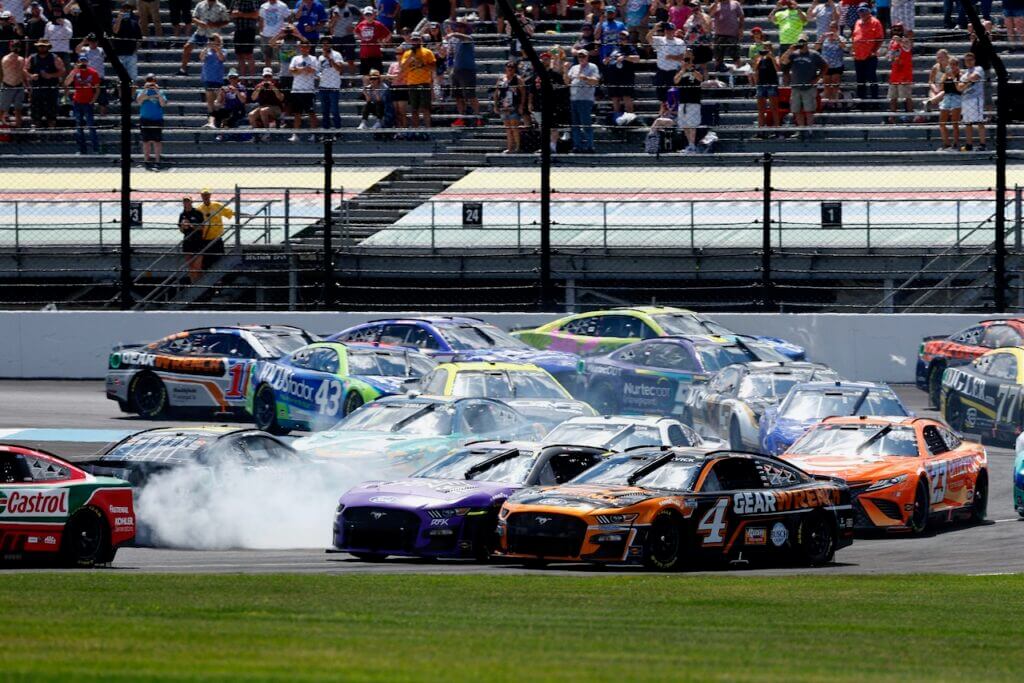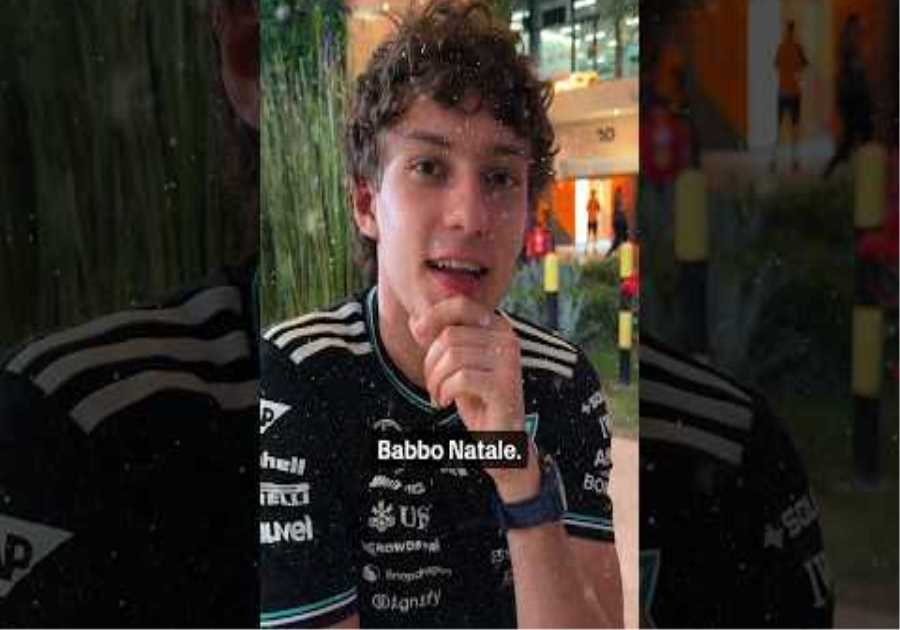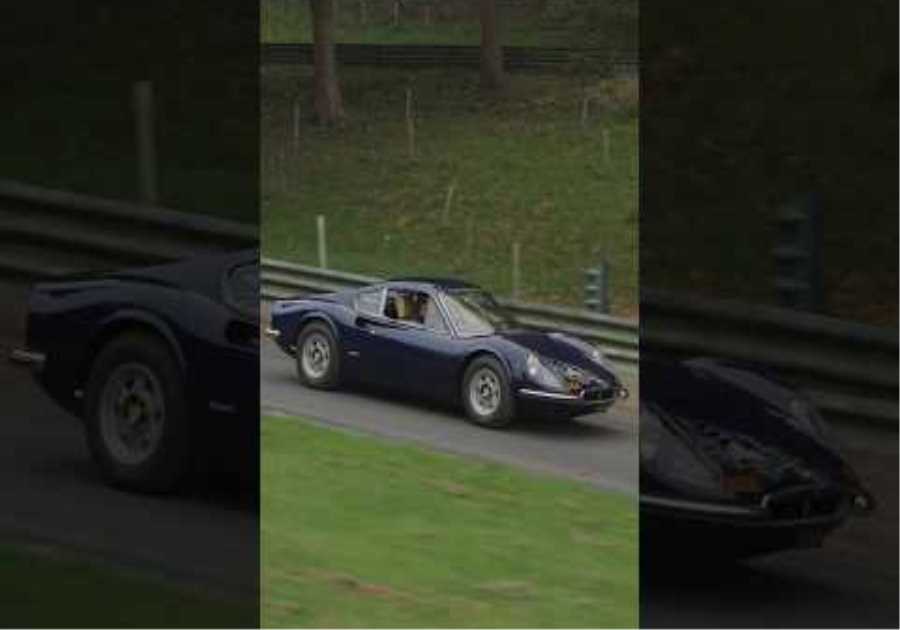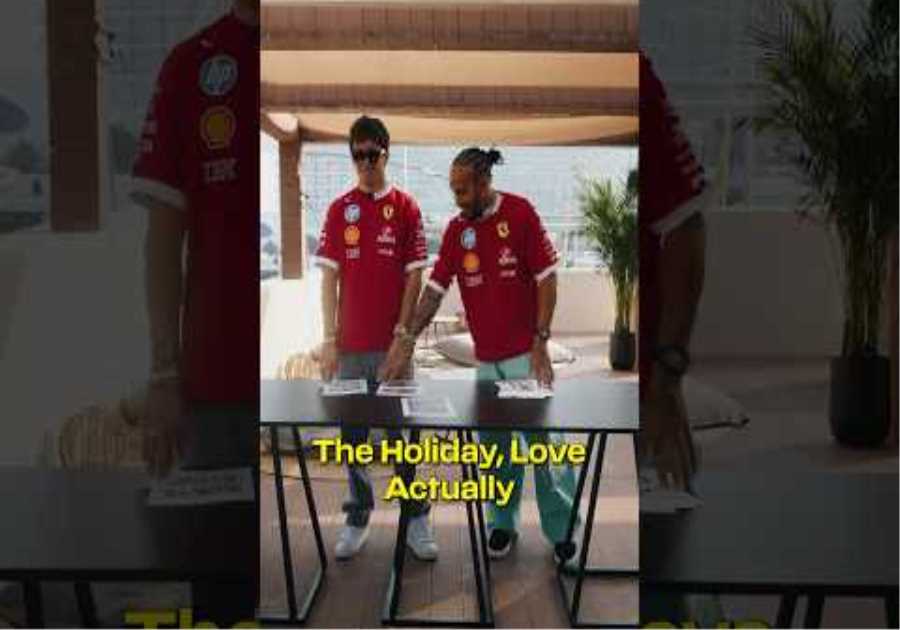
Five thoughts after this weekend’s races in Indianapolis and Hungary…
1. Old man yells at cloud
I try not to be too cranky about the quality of NASCAR racing at times, because it comes off like that disgruntled Clint Eastwood meme from “Gran Torino.”
There’s no respect out there these days! Get off my lawn!
But…geez. come on guys The repeated Turn 1 chaos we saw on Sunday at Indianapolis Motor Speedway might have checked the entertainment box (Wild! Wacky! Crazy!), but gets an F in terms of good racing.
At perhaps the world’s greatest and most prestigious racetrack, the Cup Series drivers made mad dashes toward the end of the straightaway and piled into one another to see who the lucky survivors would be. Others simply were sent spinning or flying off course. It’s never good when elite, talented race car drivers end up looking like clowns — and that’s what happened on Sunday.
There should be a higher standard. Greg Ives, crew chief for Alex Bowman, told SiriusXM Radio on Monday morning the type of driving seen Sunday was “not good for racing and not good for professionalism.”
“I’ve seen better racing out of my 7-year-old kid,” Ives said. “When we go to these go-kart tracks and they touch somebody, they get penalized for avoidable contact.”
Not so in NASCAR, obviously.
Ives said a big part of the reason is there’s no downside for hitting someone with the Next Gen car. The bodies are more durable and the nose is such that a driver can just snowplow the car in front of them without consequence (though Ives suggested a “bruised nose or black eye” might do the trick).
Ryan Blaney, who was spun out on the final restart, expressed similar frustration after the race.
“That’s all people do at the end of these things, just dive in there and wreck you,” Blaney said. “I don’t know who shoved who, and I don’t care. … It’s just a matter of getting through on the restart, but apparently that’s a hard thing to ask. People just run over each other.”
NASCAR clearly doesn’t want to step in and start issuing penalties. For one thing, NASCAR embraces this style of racing and loves the highlights, drama and controversy it generates. Second, who would officials even have penalized on Sunday when seemingly half the field was guilty of using other drivers to make the corner?
Not to go all pearl-clutching on you here, but it’s a problem when the top-level series races like this because it trickles down to all the levels of the racing ladder — from Xfinity to Legend cars. If champion NASCAR drivers race like that, why can’t I?
Call me grumpy if you want, but the lack of respect displayed on Sunday has to be cleaned up. Frankly, it was embarrassing.
Max Verstappen is cruising toward a second straight Formula One crown. (David Kirouac / USA Today)
2. Max by a million
So much for that. Despite Ferrari’s frequent blunders and Max Verstappen’s overall strength this year, I’d been holding out hope of a close title fight in Formula One.
Welp, that’s not going to happen. Any chance of Charles Leclerc somehow catching Verstappen was doomed on Sunday when Ferrari threw away yet another race (how in the world is that possible?) and Verstappen went from 10th to first to score another victory heading into the summer break.
My faint optimism had previously relied on two factors. First, Ferrari couldn’t make the wrong moves that frequently and was bound to turn things around; second, grabbing some momentum heading into the monthlong rest period might have been enough of a boost to make for a real battle when the season resumed.
But nope. That hope looks incredibly foolish now, because the only momentum turned out to be with other teams: Verstappen and Red Bull jumping off the top rope to crush any dwindling chance for Ferrari to salvage this mess of a season and Mercedes suddenly pulling to within range of second place in the constructors’ championship.
It’s absolutely mind-boggling, and I can’t fathom how Ferrari recovers from this anytime soon. In what should have been considered a turnaround season, Ferrari has been the butt of jokes worldwide. In 19 years of covering auto racing, I can’t remember another instance when a team with this much consistent speed continually shot itself in the foot.
This isn’t just Ferrari having one or two chances to win a race and screwing something up. This is over and over where the team seems to have faster cars than the competition and yet discovers new ways to lose with them. It was comical in a Keystone Kops sort of way for a while, but now it’s just sad.
So with that storyline out the window and Verstappen headed for his second straight championship, what will the focus be when the F1 season resumes at the end of this month? One big angle will be on Mercedes’ improvement and whether Lewis Hamilton can win a race before the year ends. After all, Mercedes has made enough gains that it’s suddenly realistic again.
“It’s an amazing way to go into the break, knowing we’re clearly closing the gap and have more performance,” Hamilton said. “Hopefully, we’ll bring some more into the second part of the season and start fighting with the guys in the front.”
3. Short track special
Friday night’s Truck Series race at Indianapolis Raceway Park was invigorating and aggravating at the same time.
Seeing the energy from the crowd and the NASCAR industry surrounding the return to IRP was fantastic, and the racing was everything you’d hope for from a short-track race.
Ross Kenseth tweeted the race was made enjoyable because of three factors IRP offered: Multiple grooves, tire falloff and throttle control. In other words, drivers had room to race and had to manage their equipment at the same time.
It certainly felt like a nostalgic race in that sense, like the sort of thing you’d watch in the early 2000s.
“Such a great race! Felt (like) old school short track racing. 10/10,” driver Garrett Smithley wrote on Twitter, one of many in the NASCAR world to express enthusiasm that night.
On the other hand, it was also a maddening reminder of poor decisions from the past. If IRP is such a great track for NASCAR — and it is — then why had it been 11 years since NASCAR brought one of its national series there?
I wrote this in 2011 after the decision to leave IRP was announced: “This just seems to be one of those decisions that’s more about money and less about the best interests of the fans. Otherwise, why take a successful, popular race with tradition and move it to a venue where you know it won’t be as exciting?”
That’s still a valid question today, because NASCAR hasn’t been able to get enough of its races onto short tracks for whatever reason. Officials often talk about a desire to do so, such as adding a potential race at the Nashville Fairgrounds. Perhaps North Wilkesboro is truly being revived.
But NASCAR has also taken away one of the paved Bristol races in favor of dirt and stood by as the new SRX series has put a spotlight on tracks like Stafford, South Boston and Pensacola — with a national TV audience and packed grandstands.
With the upcoming street race in Chicago next year and the existence of the successful Clash race inside a football stadium, nothing is impossible in NASCAR anymore. A bold-thinking sanctioning body is clearly willing to try anything.
That’s why an increased emphasis on short tracks should be at the top of the list. These tracks already exist and have a history. Yes, they’re small and don’t have the modern amenities most Cup tracks do — but so what? The racing would outweigh those concerns, just as it did at IRP on Friday.
The “More Short Tracks” movement shouldn’t die just because the Next Gen is off to a slow start on smaller tracks. These circuits are the heart and soul of NASCAR racing and need to have an elevated importance on the schedules across all three national series.

Kevin Harvick is among the drivers needing a win to get into the playoffs. Could Michigan be his ticket in? (Stan Szeto / USA Today)
4. Playoff puzzle
On Saturday night, I went to bed thinking: “Dang, I cannot wait to see what happens in the NASCAR race tomorrow.”
What is it because of a road course race? No, there are plenty of those now.
Was it because the race was at Indianapolis? No, I’d prefer the prestige of running the oval.
Was it because of the playoff picture? Bingo!
The way this season has shaped up, with so many different winners compared to the number of available playoff spots, has created one of NASCAR’s most interesting summers in memory. My brain used to tag July and August as sort of the blah-blah, let’s just get through this portion of the season. Spicing up the schedule has helped, but the playoff scenarios have been the biggest boost of all.
As it turned out, Sunday’s race didn’t see a new winner. But that’s OK, because it still moved the storyline forward with four races remaining in the regular season. Will there be two more new victors to fill all 16 playoff spots with race winners? It remains possible, and even one more winner from outside the current playoff picture would knock out a huge name (either Blaney or Martin Truex Jr.).
Can Kevin Harvick win at Michigan and vault himself into the playoffs? He’s done it five times before. Can a Michael McDowell win at Watkins Glen? It’s certainly possible. Can an Erik Jones or Bubba Wallace snatch a playoff berth at Daytona? you know it
The Next Gen car has brought a level of freshness and parity we might never see again. Who’s to say this pattern will continue in seasons to come as teams get a better handle on their setups? It might revert to the powerhouse organizations and drivers hogging most of the victories again instead of spreading things out.
So in the meantime, I’m going to enjoy this feeling of anticipating the next week for as long as possible. Plenty of seasons have seemed to drag on forever in a predictable fashion, but this one has found a way to remain unique even as August arrives.
5. Take crossover weekend to the next level
While it’s certainly cool to have IndyCar and NASCAR share the same track on the same weekend, there’s only so much that can be said about drivers from one series being interested in the other.
Aside from TV clips and social media posts along the lines of, “Check out this driver looking at another type of car!,” there doesn’t seem to be much more to explore with the crossover weekend.
What could really get some buzz? NASCAR and IndyCar working together to get a stock-car driver in the open-wheel race and vice versa.
While it would be hard to do that in a good ride and thus perhaps not have much of an impact on the race itself (just look at ex-F1 driver Daniil Kvyat, who made his Cup debut in backmarker equipment this weekend and was a non -factor), it would also serve to emphasize the difficulty level of each series while adding a curiosity factor for fans who might normally watch only one of the races.
Drivers like Kyle Larson, Tyler Reddick and Kyle Busch all have Indy 500 aspirations; maybe they could get a chance on the road course to feel out at IndyCar. And plenty of IndyCar drivers would jump at the chance to try NASCAR for a weekend, including Conor Daly and Scott McLaughlin — whose background in Supercars is closer to NASCAR vehicles than what he’s driving now.
Growing all of motorsports is the point of the crossover weekend, yet there are certainly fans of each series who remain stubborn about giving the other a shot — whether due to preconceived notions or a sense of superiority.
Perhaps the philosophies of the various series are so different now that it’s created silos of fans who will never be able to find themselves attracted to another style. But let’s hope there’s still a chance for the term “race fan” to mean someone who loves all forms of motorsport.
(Top photo: Mike Dinovo / USA Today)
Did you miss our previous article...
https://formulaone.news/ferrari/hungarian-gp-race-beats






